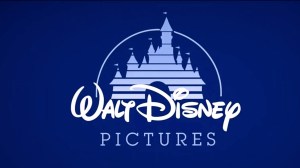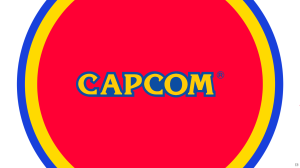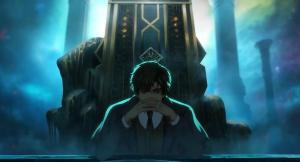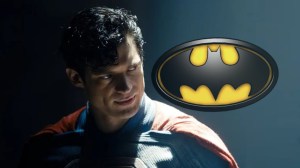
The 2016 Summer Olympics have entered the second and final week of their festivities.Let’s face it, the world hasn’t been in the grip of something they could watch on their portable screens like this since Pokemon Go a couple of weeks ago.
Videos by ComicBook.com
It’s a good time to review some Olympics-themed comics.I grabbed a pair of English translations of well known classic 1960s-era Franco-Belgian comics.
The Smurf Olympics

Lazy Smurf is upset.He likes sports.He wants to play them against other Smurfs.But no other Smurfs in the village want to do anything more than play games: darts, chess, pole fishing, etc.
Papa Smurf suggests setting up some games, promising medals to the winners. That doesn’t work, though, because of continuity!Yes, the Smurfs have continuity!Medals were a prize when the Smurfs chose a King (in volume 2, “King Smurf”), in a classic story that didn’t go so well for the little blue guys (and gal). It’s one of the best Smurf stories, and highly recommended. Honest.
So the medals are a no go. Lazy then increases the prize to include a kiss from Smurfette.No, he doesn’t ask her about this first.He just promises it and every single Smurf in the friggin’ village gets in line to sign up immediately.
It’s a creepy moment in 2016.The only thing that’s weirder is the ending, when Smurfette doesn’t kiss the winner, but instead runs off with another Smurf who brings her a pink card.It’s bizarre from a modern point of view.
Games are announced and, eventually, teams are created.The Yellows and the Reds are formed.Since this is a story written in the 1960s, I have to wonder how much of that is a reference to China and Russia.
Weakling Smurf — who looks identical to every other Smurf but is very weak otherwise — becomes his own team since nobody else would want him.
Brainy Smurf, of course, becomes the International Olympic Committee type character, dictating rules and blowing a whistle for every violation he can come up with.This makes him most unpopular.
The rest of the story is a series of quick gags centered on Olympic games, most of which work, but not all.As a story, it might have been ten pages shorter with some focus, but give Peyo the room to have some fun with his characters and do physical gags AND verbal gags, and you have a relatively good time.
The main storyline that flows through the issue is, surprisingly enough, Weakling Smurfs’. I won’t give it away, but I did see it coming a mile away.Papa Smurf gives him a potion to put on his nose that will help him be stronger and faster. The red nose is a simple way for the author to make Weakling stand out from the 100 identical Smurfs around him, of course.
Things get a little ugly as the book winds up.The overwhelming competition gets to the normally happy Smurf village, leading just about everyone to cheat in one way or another.A series of nasty unsportsmanlike events follow. That’s the thing about a lot of Smurfs stories — they’re quick to rile up but eventually do fall back in line.Smurfs are nasty little creatures when pushed just the slightest bit.
The joy in the story, for me, is looking at Peyo’s work.Lots of the gags in this book are visual.The Smurfs know how to act.For such a simple design, Peyo milks every bit of action and attitude out of it with every panel.With those big heads and feet, they have a cute look that’s endearing.Every gesture sells those features, matching perfectly with the word balloons.Peyo does a lot with relatively little.
The book focuses on the track and field events, including sequences on high and long jumps, a major relay race, and the marathon.

The rest of The Smurfs Olympics is filled with one page gags done by Peyo and Yvon Delporte.They’re mostly visual archery gags.They’re cute in small doses, but reading them all at once feels a little thin.
This is volume 11 in the Smurfs series from Papercutz, available in softcover and hardcover in print, and also digitally.There are better books in the series, but there’s still good stuff in this one. And if you’re so in the Olympics mood these days that team table tennis is a sport you look forward to in the afternoon, then this is a good book for you.
Asterix at the Olympics

On the opposite side of that Smurfs story comes Asterix at the Olympic Games, which has a relatively thin plot, but is packed with a ridiculous number of gags, not all of which are obvious. You need a cultural reference guide to help explain all of them to you, but if you’ve read Asterix before this, then you’re used to that already. In fact, this one could easily be titled Asterix and the Greeks, since that’s where the games are, and that’s where all the cultural humor is set.
Basically, the Gaulish village Asterix lives in gets wind that the Olympic games are coming up. Because they are technically “conquered” by the Romans they normally fight against, they can play in the games to glorify Rome. With the help of their magic potion, Asterix and Obelix are sure-fire winners.
This is all much to the dismay of the actual Romans, who now see the games as a waste of their time and a bitter disappointment to their Emperor, so why should they even show up?
It’s not a terribly deep plot, but Rene Goscinny and Albert Uderzo push it to the max and explore many avenues along the way. Every beat is fleshed out with a great moment of humor.
- When the chiefs of the two villages meet at the beginning, there’s a hilarious attempt to observe proper protocol that leads the Roman to visiting Chief Vitalstatistix in his bath.
- When the Roman Olympian meets up with Asterix and Obelix practicing their events in the forest, a slow burn explodes beautifully.
- Later on, the plight of the Romans who are giving up is dragged out for all its worth.
- The Olympic village, as it turns out, is not normally a place where athletes gorge on good food and wine. Go figure..
- There’s also a page-long history lesson of the city of Olympia, that concludes that Heracles wore a size 11 shoe. It sets up another joke later in the issue.
As for the games, themselves, this book includes a bit of boxing, but mostly features the marathon as the major sport of its time.
The one side note on this volume is just how weak the reprinting is. The original publication is from 1968 to coincide with the Olympic games that year. And while it’s all perfectly legible, there’s a lot of thin lines that are disappearing or appearing almost pixelated in this printing. Look closely at the pages and you’ll see black lines that aren’t black enough and every line is digital. It’s like someone blew up the images from a smaller scan, or forgot to anti-alias the art.
Also, the colors are often shifted just a tad, the way colors might misprint in the newspaper printing press. I don’t think that’s just my copy, either. I think that’s just the shape the original materials are in.
These books were already restored and cleaned up a decade ago, along with a healthy recoloring that’s made the books look a hundred times better. I just don’t understand how the artwork, itself, comes out with such obvious issues.

Asterix and the Olympics is the 12th volume in the series, at a time when writer Rene Goscinny and artist Albert Uderzo had worked together long enough on the characters to get the hang of things. It represents the halfway point in the pair’s working relationship, before Goscinny died and Uderzo took over the writing, as well. It’s the pair working into their prime, knowing what they want to do and how to do it.
While the structure of a loose plot to support the gags shows a little strain in the Smurfs book reviewed above, I think it’s a strength of this Asterix tale.
The book is available in English through Orion Books in the UK. (The translations by Anthea Bell and Derek Hockridge are, of course, legendary.) Both softcover and hardcover editions are available. For $10, the softcover price of admission for the 44 oversized pages of story is tough to argue with.
If you’re looking for one Olympics comic to give a try this summer, make it this one.
PipelineComics.com || Instagram || Facebook || Twitter || E-mail









